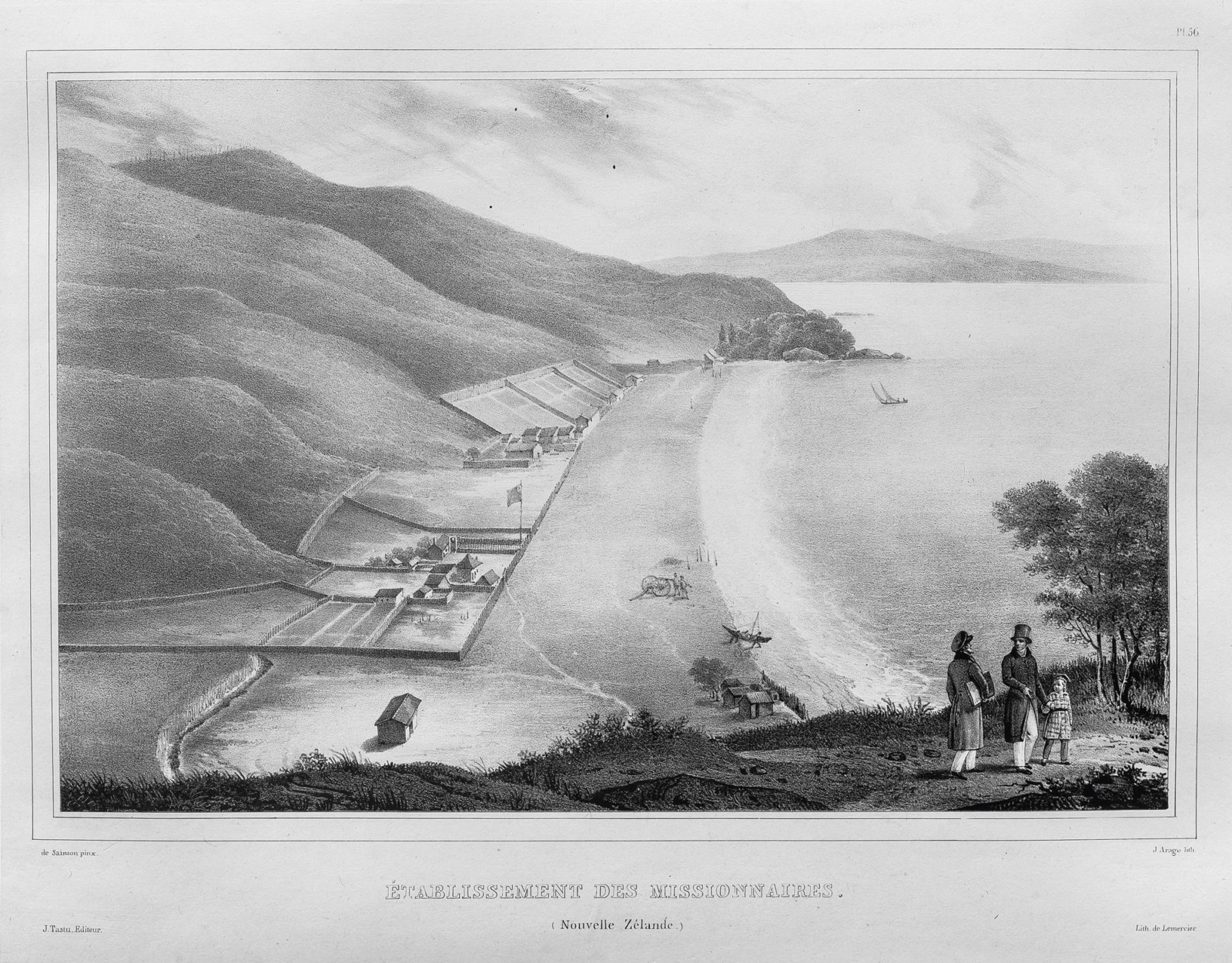DE SAINSON, Louis Auguste;
Establishment of the Missionaries
1833
Lithograph on paper
313 x 494mm

Original title: ‘Établissement des missionnaires (Nouvelle Zélande)’. Lithographed by Jacques-Étienne-Victor Arago. Plate No. 56 from Jules-Sébastien-César Dumont d’Urville, Voyage de la corvette l’Astrolabe exécuté pendant les années 1826–1827–1828–1829 (Paris: J. Tastu, 1833). Other lithographs from the series can be viewed here.
The following text comes from the catalogue for the exhibition Tirohanga Whānui.
Pahia was founded as a Missionary settlement only four years before de Sainson drew it on 12 March 1827.
Seen from a high viewpoint in the foreground looking north along the beach, the well-ordered settlement of Paihia is dominated by the Church Missonary Society’s compound which was established in 1823 by Rev. Henry Williams. It was the third such missionary establishment after Rangihoua (1815) and Kerikeri (1819) and was regarded as ‘heaven’ in contrast to the whaling establishment across the water at Kororāreka, described by Polack as ‘the hell-hole of the Pacific’. It contrasted sharply with Kerikeri too, where the missionaries had been filled with alarm at the cannibal feasts of Hongi and his warriors.
In this version of the original image three settlers, two well-dressed gentlemen and a child, are shown with their backs to the view. One of them is holding a folder of papers—could he be de Sainson who depicted himself in this way more than once. (In another version two Māori are shown in conversation while a pākehā looks on.)
On the beach, a masted dinghy is being pulled ashore, two men are fixing ties to a gun carriage; at the far end of the beach, a little out to sea and obviously being blown by a healthy breeze, a two-masted sailing boat is coming into shore.
Māori dwellings are indicated behind a fence close to the shore. Above the missionaries’ compound a flag flies. In the watercolour on which this lithograph is based, the markings of the Union Flag are clearly visible on the flagstaff. This is perhaps noteworthy given the French interest at the time in colonising New Zealand.
Exhibition History
Tirohanga Whānui: Views from the Past, Te Kōngahu Museum of Waitangi, 15 April to 15 September 2017

